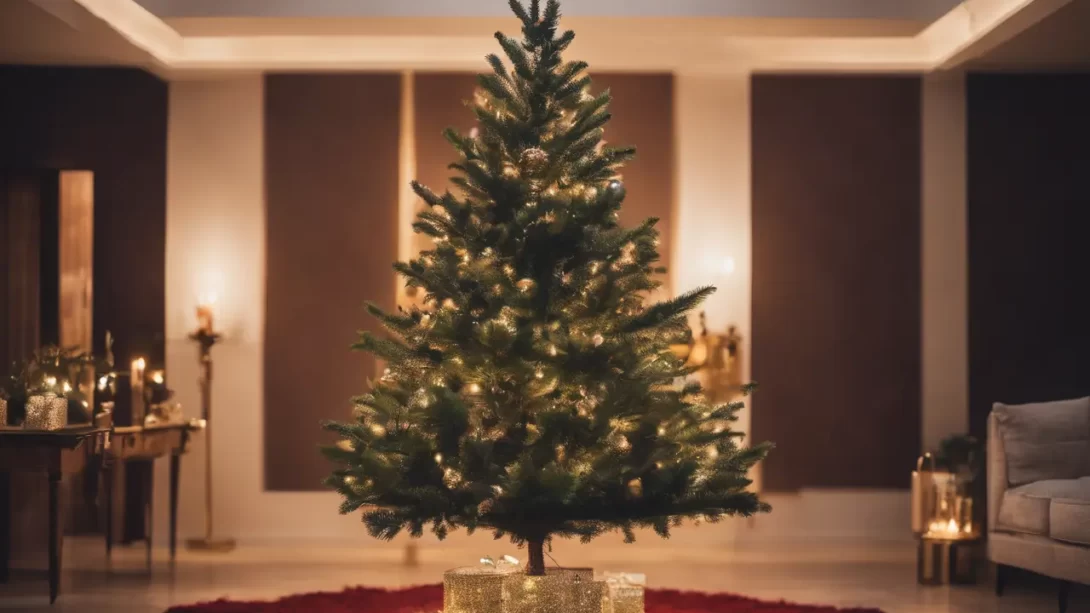Christmas trees have long been a cherished symbol of the holiday season, gracing homes with their beauty and festive spirit. However, as the season ends, many are left wondering about the fate of their cherished tree. A common question that arises is whether it’s possible to replant a Christmas tree, particularly when it lacks roots. This article explores the viability of replanting Christmas trees without roots and delves into the science behind tree survival and growth.
Christmas Tree Roots
The root system of a Christmas tree, typically a fir, pine, or spruce, plays a critical role in its survival. Roots are responsible for absorbing water and nutrients from the soil, anchoring the tree, and supporting its overall growth. In the case of most Christmas trees used during the holidays, they are cut trees, which means their root systems are severed. Without roots, a tree loses its ability to perform these vital functions, significantly impacting its chances of survival if replanted.
The Feasibility of Replanting Without Roots
From a scientific standpoint, the likelihood of a Christmas tree surviving without roots is extremely low. Trees rely on their roots for essential functions, including nutrient uptake and stability. Once a tree is cut, the connection between its roots and its ability to sustain itself is lost. While there are instances of plants regenerating roots, this is typically not feasible for mature trees like those used for Christmas. The process of growing new roots, known as root regeneration, is complex and usually only possible under specific conditions, generally in younger or smaller plants.
Alternative Methods to Keep a Christmas Tree Alive
While replanting a Christmas tree without roots is generally not feasible, there are alternative methods that some may consider trying. One such method is hydroponics, which involves growing plants in water without soil. However, this method is typically more successful with smaller plants and is unlikely to be effective for a mature Christmas tree due to its size and the complexity of its root system.
Another method that could theoretically be considered is grafting. This involves attaching a portion of the Christmas tree to the root system of another tree. Grafting is a complex process and is generally used in agriculture for fruit trees and other plants, not large conifers like Christmas trees. Moreover, the success rate of such an endeavor with a mature Christmas tree would be quite low.
Sustainable Practices with Christmas Trees
Considering the challenges in replanting cut Christmas trees, it’s important to explore sustainable practices. One option is to choose a living Christmas tree with roots intact, which can be replanted after the holidays. These trees can be kept in pots and used for several years or planted outdoors if climate conditions allow.
Another sustainable practice is to rent a Christmas tree. Some businesses offer living Christmas trees for rent during the holidays. After the season, these trees are returned and replanted. This practice not only reduces waste but also helps maintain the tree’s life cycle.
Additionally, purchasing a Christmas tree from a sustainable tree farm ensures that for every tree cut down, another is planted in its place. This practice helps maintain the balance of tree populations and supports responsible forestry practices.
Creative Uses for Christmas Trees After the Holidays
For those with cut Christmas trees, there are creative and sustainable ways to repurpose them after the holiday season. In the next section, we will explore various ideas for reusing Christmas trees, including crafts, mulching, and other environmentally friendly practices. This approach not only extends the life of the Christmas tree but also contributes to sustainable living practices.
Creative Uses for Christmas Trees After the Holidays
Even though replanting a cut Christmas tree is not feasible, there are numerous ways to repurpose it creatively and sustainably. Here are some ideas:
- Mulching: Christmas tree branches can be stripped and used as mulch in gardens. The pine needles decompose slowly and can help regulate soil temperature and retain moisture.
- Garden Structures: The sturdy branches and trunk can be used to create natural garden structures, like trellises or stakes for supporting climbing plants.
- Crafts and Decorations: Smaller branches and pine needles can be used for a variety of crafts. They can be fashioned into wreaths, garlands, or even used in homemade potpourri.
- Wildlife Shelter: Placing your old Christmas tree in your garden can provide shelter and habitat for birds and other wildlife during the winter months.
- Firewood: While pine wood is not ideal for indoor fireplaces due to sap content, it can be used for outdoor fire pits or bonfires.
- Recycling Programs: Many communities offer Christmas tree recycling services, turning your tree into wood chips or compost that can be used to nourish other plants.
Conclusion
In conclusion, while it’s not possible to replant a Christmas tree without roots, there are still many sustainable and creative ways to utilize the tree after the holiday season. By choosing living Christmas trees or supporting sustainable tree farms, you can enjoy the holiday tradition in an environmentally friendly way. For cut trees, consider repurposing or recycling them to extend their usefulness and reduce waste.
The spirit of the holidays can be enriched by these sustainable practices, aligning the joy of the season with the principles of environmental stewardship. By exploring these options, we can enjoy the beauty and tradition of Christmas trees while being mindful of our impact on the environment.




